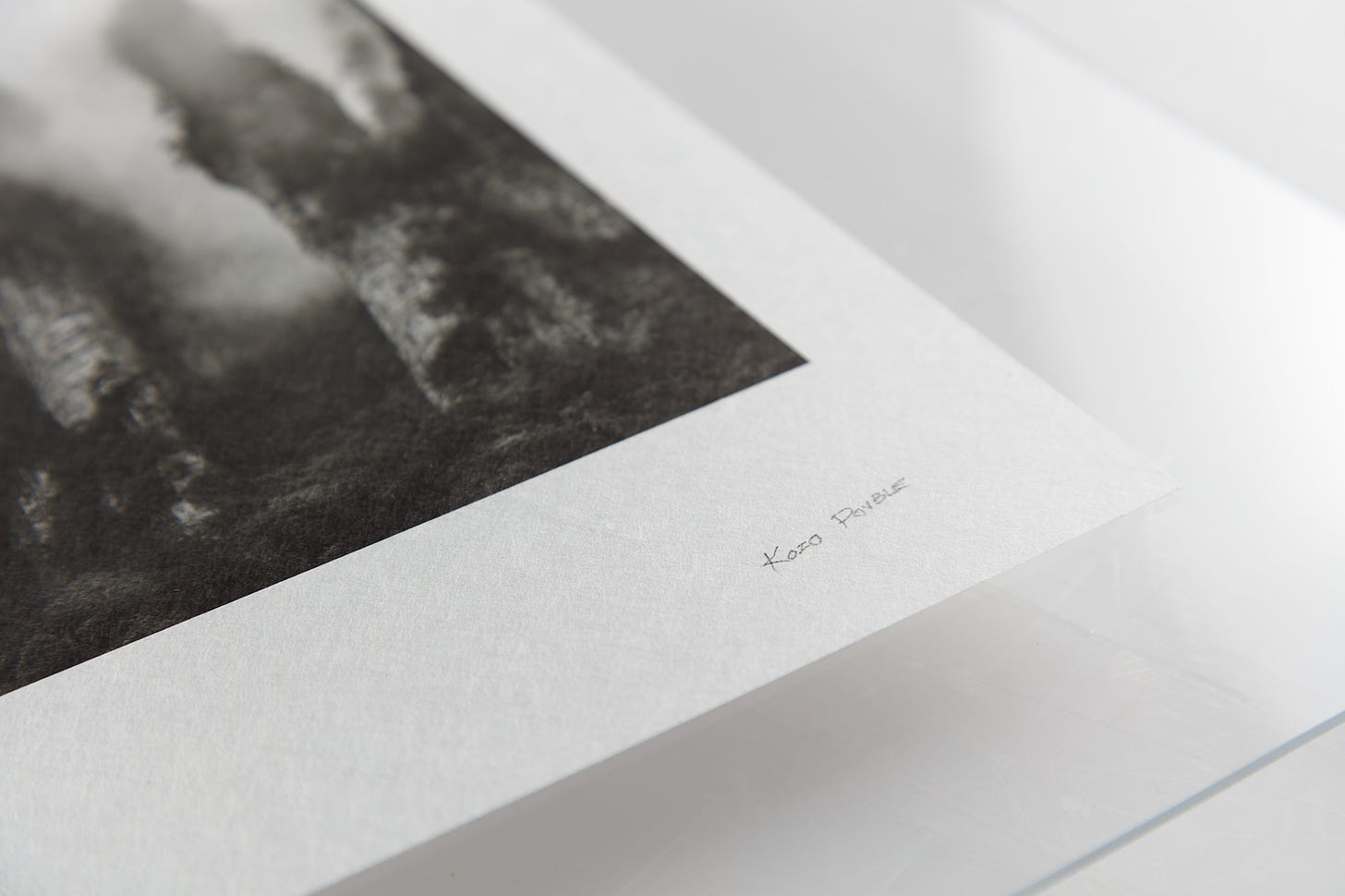
You may recall a brief update on our crazy endeavors with some of Awagami’s super thin papers. To summarize, the insane activity was the soaking of damaged papers and flattening on pieces of glass. Our initial observations seemed to indicate that certain varieties of Awagami paper seemed to stick to glass in a somewhat permanent manner, specifically the peel-apart varieties.
We were a bit hasty in reaching that conclusion. Left to dry for extended periods, all of the papers we tested will eventually release from the glass or plexi they were wet mounted to. These results are far from the end of the story. While verifying our observations on the peel-apart papers, we also experimented with a wide variety of adhesives that would allow us to mount any of the thin Awagami papers to glass, plexiglass, or any smooth surface.
We’re far from determining the best methods to accomplish this for mounting these papers for creative display. We have many more surfaces, adhesives, mounting methods, and framing techniques in the works. You can count on periodic updates as we continue these projects. Today I wanted to discuss the broader topic brought up in the previous newsletter; the question of ”why” we experiment.
I addressed the question of why we were soaking finished prints in the first place but I didn’t discuss the overall question we were asking when we did that. The real question we were asking ourselves was when and why we would choose one thin variety of Awagami versus another. What are the properties of each?
A rundown of Awagami thin papers

Paper manufacturers typically offer a few weights of their paper offerings. Take Moab’s Entrada for instance. They offer Entrada Natural and Bright in both 190 gsm and 300 gsm. We answered the question of why would one choose one over the other a long time ago. Thicker isn’t always better.
When assessing Awagami’s offerings the thin varieties of Kozo Inbe papers are far different than the mere weight and handling characteristics. The thin varieties highlight the unique surface characteristics of each paper and internal structure far more than their heavier siblings. Beyond that the thin varieties are unique and there are no alternatives.
Inventory Awagami thin inkjet papers:
All of these thin varieties exhibit their unique surface textures and internal structure. The last two are the peel-apart papers. The first four papers that are not designed to be peeled apart are less costly than their thicker siblings. The big question we must answer for ourselves and hopefully all of you is when and why to choose those peel-apart papers as opposed to the 42gsm Murakumo.
The lesser but other important questions center around the choice between those ultra-thin varieties and the 70gsm variants. Last, why would one choose Inbe versus Kozo Thin? Over the coming months, we will set out to find the answers to all of these questions and more. We are well on the way to understanding and providing specific guides and visual references.
The importance of play
Be in photography, painting, writing, or any creative, artistic endeavor, play (you can call it experimentation if that suits your mindset better) is critically important to discovery. Take our minor sidetrack into de-wrinkling and flattening a ruined sheet of peeled-apart Kozo Double Layered. Our first try was trash but just for fun, we decided to crumble it up, soak it, roll it out on a smooth piece of glass, and see what happened.
It stuck to that glass and looked fantastic as a finished mounting option. This led us to find out if all the papers stuck to glass well. They didn’t which lead us to figure out the best methods to adhere them. This led us to design ways to sandwich these thin papers between glass with attractive wooden edges which will allow free-standing and hanging mounts with or without glass. All of these things, and more are under active development, and cannot wait to share them with all of you. All of them sprung from this play.
The big surprise
Some of you may be lamenting there’s more to glass/plexi surface mounting than mere soaking. That initial surprise we discussed turned out to be a bit more complicated. Here’s a bigger surprise; Beyond de-curling, de-wrinkling, flattening, or other repair of these thin papers there is an extremely interesting and attractive reason to soak many of these papers and dry them flat.
One of the truly attractive properties of all Awagami papers is the way a printed image appears to be *in the paper rather than on top of the paper. The other is the wonderful surface textures that combine with the prior property. Wetting and drying these papers after printing, sometimes repeatedly, brings out the inherent surface texture more and more. At the same time, it also enhances that in the paper look.

Yes, wetting these papers allows you to fine-tune that unique and wonderful look that you’d choose Awagami papers for in the first place. We would have never stumbled across this without playing (experimenting). There will be much, much more to come on all these topics. Thank you to all those who support us with paid subscriptions! It would be impossible to dedicate the time and resources to any of this without you. Hopefully, as we go into 2024 we can dedicate more time every month to deliver more to all of you.





Love the very concept of experimenting as play. Happy children play. Grumpy adults work. They both learn, I vote for play!
Just found this newsletter, and I'm excited to learn more. I've always liked the idea of working with diifferent types of paper.